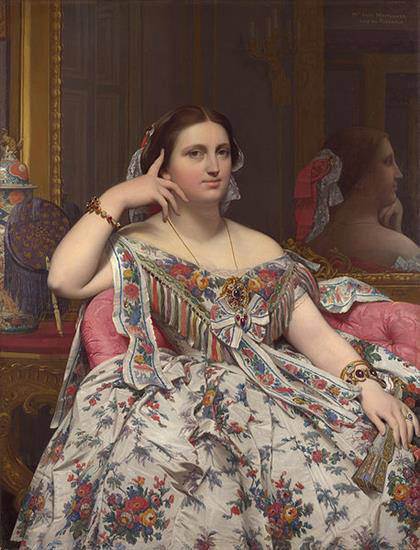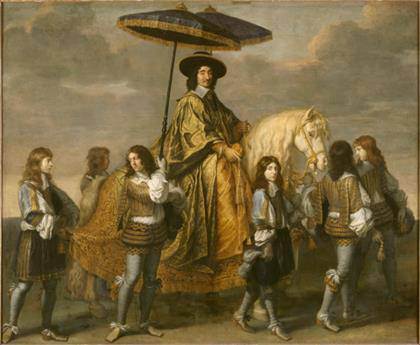
Jean-Auguste-Dominique Ingres, Madame Moitessier, 1856, oil on canvas, 120 x 92.1 cm © The National Gallery, London, Dist. RMN-Grand Palais / National Gallery Photographic Department
‘Spectacular Second Empire’ at Orsay For the first time, the musée d’Orsay is looking at the era of the Second Empire, 1852 – 1870, the first society of spectacle and consumerism, a society that we have inherited. 27 September 2016 – 15 January 2017.]]>
Source: Musée d’Orsay
The ostentation of the “fête impériale” and France’s humiliating defeat in 1870 by Prussia, have long tarnished the reputation of the Second Empire, suspected of having been a time purely of amusements, scandals and vices, as described by Zola in his novels written during the Third Republic. It was, however, a period of unrivalled prosperity in the 19th century and one of unprecedented social upheavals. A time of abundance, euphoria and numerous celebrations, political, economic, religious and artistic, today we see the 1850s as the pivotal moment in the birth of “modern France” (Gambetta).
During the Second Empire, Parisian life pulsated to the rhythm of a multitude of society balls, soirées and salons organised by the most dazzling court of the 19th century, the memory of which is kept alive in several large watercolours by Eugène Lami and Henri Baron. Paris became the court of this “fête impériale”, which was more political than it seemed, and which supported the luxury goods industry. This society cultivated a taste for “tableaux vivants”, dressing up and fancy dress balls, where identities were concealed, where the “beau monde” and the demimonde mixed and intrigued.
Taking advantage of the vivacity of the Parisian world of opera and theatre, the Emperor brought in modern regulations for theatres, demolished old theatres and launched a building programme for new venues such as the theatres in the Place du Châtelet, and Charles Garnier’s new Opera, the monument to entertainment par excellence. The city of Paris, a constant building site, transformed by Haussmann’s scenography, became an openair set and an element of artificiality invaded the urban space. With the arrival of leisure activities and holiday resorts, from Biarritz to Deauville, came a New Painting, evoked in the exhibition by the paintings of Boudin, Degas, Renoir and Monet.
Related content
‘Manet, the man who invented Modernity’ at the Musée d’Orsay (exhibition, 2011)
Follow us on:


